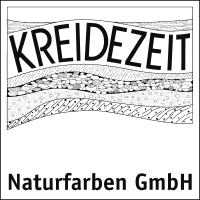Soda (sodium carbonate) is a versatile salt known as an old household remedy that should not be missing in any household. Until 1850, soda was still produced by evaporation from the water of so-called soda lakes in Egypt, North and South America, as well as by burning sea and beach plants that were rich in cooking salt. To achieve higher purity, these methods were replaced by chemical processes. Today, soda is again increasingly extracted from the water of the soda lakes, as these processes, including cleaning, require considerably less energy.
Properties
- cleansing action
- odor-binding
- alkaline
- saponifies fats
- fungicidal and bactericidal
- neutralizes acids
- environment-friendly
- inexpensive and productive
- vegan
Full Declaration
Sodium carbonate, sodium hydrogencarbonate
When using the product, the complete Product information must be observed.
Mild removal of old oil and wax coatings
Some old oil and wax coatings can be removed with simple soda lye. It is always worth trying this comparatively harmless household remedy first, instead of using a sharp paint stripper that may contain solvents.
Dissolve 3 heaped tablespoons of soda in 1 l of hot water. Apply with a sponge to the old wax/oil coats to be removed and leave for 5-10 minutes. The old coatings dissolve into a brown liquid. Wash off with clear water and, after 1 day of drying, apply vinegar twice and saturated for neutralisation.
After fine sanding, a new coat of paint can then be applied. Attention: woods containing tannins can darken due to soda lye (e.g. oak). Pre-testing is required!
Gentle cleaning of lacquered surfaces (windows / doors) as a substitute for ammonia
1 teaspoon of soda in 1 litre of water. Then rinse with clear water.
Leaching of lacquered and oiled surfaces, as preparation for a new coating
Dissolve 2 tablespoons of soda in 1 l of warm water and briefly rub off the surfaces to be cleaned, if necessary leave to act for 1-2 minutes. Then rinse 1x with clear water and 1x with household vinegar. The soda lye has now transformed the previously smooth oil/varnish layer into a matt, load-bearing substrate on which a fresh oil treatment can be applied.
Softening of the washing water during laundry washing (saving of detergent)
When washing with soap flakes, a considerable part of the soap is often inactivated by hard water containing lime (formation of lime soap).
For water softening, 0.1 g soda is added to the wash water per litre and per degree of German hardness (°dH).
Example: 20 litres of water (22°dH) are added 20x22x0,1 = 44g soda. After 10 min. waiting time you can wash.
You can find out the degree of hardness from the water supplier.
Removal of algae and moulds from wood and stone surfaces
scrub off with soda lye (1 tablespoon to 1 litre of water) and root brush. Kills algae and fungi with high alkalinity. In case of after-treatment with oil coats, neutralize with household vinegar (spread 1-2 times and leave to dry).
In this way, wooden boards, storage shelves and sauna wood can also be cleaned and disinfected.
Pre-testing for compatibility with the substrate is required. Some woods turn dark through (soda) lye.
Removal of grease and dirt (e.g. pots, pans)
suitable for stainless steel and enamel, not sui-table for aluminium and iron!
Boil 1-2 tablespoons of soda in ½ l of water in a pot or pan, if necessary leave to stand overnight. Also gently removes burnt-in food.
Elimination of bad odours and blockages, e.g. in drains
Dissolve 2-3 heaped tablespoons of soda in 2 litres of hot water and pour into the spout. Allow to act for 1 to several hours and rinse the spout thoroughly.
Extending the setting time of gypsum putty
A pinch of soda mixed with the gypsum mash considerably prolongs the “open” processing.
Cleaning the Tools
Immediately after use with water. Treat textiles and brushes with household vinegar if necessary (materials must be tested for compatibility with vinegar).
– Working with soda lye requires a little practice and observation. For example, the use of hot water instead of warm water can lead to the paint being completely leached off, as described above. So you should stay close and check how far the leaching process has progressed by rubbing with your finger. On the other hand, there are cases in which no visible caustic effect at all appears to occur. Here it is helpful to work with the sharp side of a pot sponge when washing off the surface, or to allow the lye a longer contact time if necessary.
to dealerlist
If there is no dealer in your region, you can order directly from us under +49 5060 – 6080650 or under info@kreidezeit.de.
Please do not hesitate to contact us if you have any further questions.



